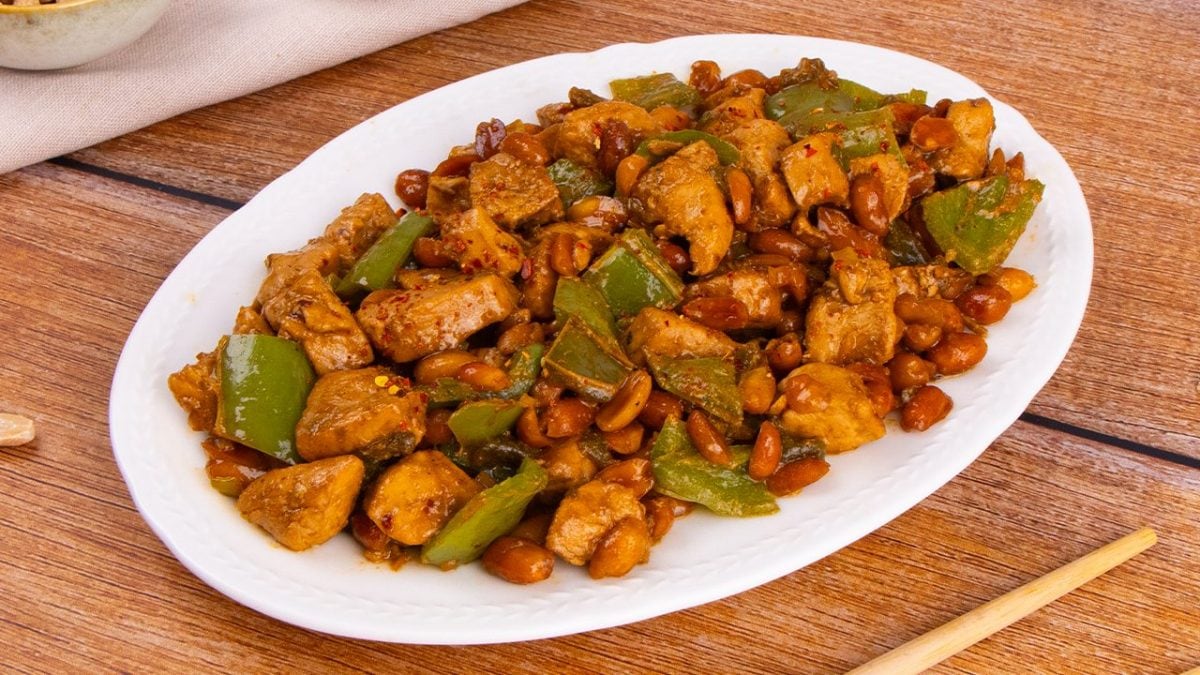
Kung Pao Chicken is a bold and flavorful stir-fry made with tender chunks of chicken, roasted peanuts, and colorful veggies, all tossed in a savory, spicy soy-based sauce. This quick and easy recipe brings authentic Chinese flavor to your dinner table in just 30 minutes—perfect for busy weeknights or a cozy night in.
Why Everyone Will Love This Recipe
- Quick to prepare—ready in under half an hour.
- Bursting with sweet, salty, and spicy notes in every bite.
- Includes protein, vegetables, and crunch all in one dish.
- Can be customized with more veggies or extra spice.
- A healthier takeout alternative you can whip up at home.
What Is Kung Pao Chicken?
Kung Pao Chicken is a classic Sichuan dish known for its perfect balance of heat, sweetness, and umami. Traditionally made with diced chicken, peanuts, chili peppers, and a flavorful sauce, it originated in southwestern China and has since become a popular staple in Chinese-American cuisine. The name comes from Ding Baozhen, a Qing Dynasty official whose title was “Kung Pao.” Today, it's beloved for its complex flavor and contrasting textures.
Cooking Tips
- Use high heat for that classic stir-fry effect—cook quickly to preserve the texture.
- Swap green bell pepper for red or yellow for a sweeter variation.
- Adjust the heat level by using more or fewer dried chili peppers.
- If you want a thicker sauce, add 1 teaspoon of cornstarch mixed with water during the last minute of cooking.
- For added umami, stir in a splash of rice vinegar or hoisin sauce.
Frequently Asked Questions
Can I Use Chicken Thighs Instead of Breast?
Absolutely. Chicken thighs are juicier and hold up well to high heat—just cut them into bite-sized pieces.
Is Kung Pao Chicken Spicy?
Yes, it traditionally has a kick from dried red chilies, but you can easily control the spice level by adjusting the number of peppers or removing the seeds.
What Should I Serve with Kung Pao Chicken?
It’s perfect with steamed jasmine rice, fried rice, or even noodles. You can also pair it with stir-fried vegetables or bok choy.
Can I Make Kung Pao Chicken Vegetarian?
Yes! Replace chicken with tofu or tempeh and use vegetable-based sauce ingredients. Keep the peanuts for that signature crunch.
Does Kung Pao Chicken Contain Sugar?
While some versions include a bit of sugar, this quick recipe skips it for a more savory flavor. You can add 1/2 tsp of sugar if you like a hint of sweetness.
How to Store Kung Pao Chicken
Allow leftovers to cool completely, then transfer to an airtight container. Store in the refrigerator for up to 3 days. To reheat, warm in a skillet over medium heat or in the microwave until heated through.
How to Freeze Kung Pao Chicken
Kung Pao Chicken freezes well. Once cooled, portion it into freezer-safe containers and freeze for up to 2 months. Thaw overnight in the refrigerator and reheat on the stove for best texture.
Ingredients
How to Make Kung Pao Chicken

Chop the bell pepper and chicken into uniform, bite-sized pieces.
Chop the bell pepper and chicken into uniform, bite-sized pieces.
;Resize,width=712;)
Heat peanut oil in a wok over high heat. Add green pepper, roasted peanuts, and dried chilies. Stir-fry for 2–3 minutes until the pepper softens slightly.
Heat peanut oil in a wok over high heat. Add green pepper, roasted peanuts, and dried chilies. Stir-fry for 2–3 minutes until the pepper softens slightly.
;Resize,width=712;)
Add the chicken and stir-fry for 5 minutes until fully cooked and slightly golden.
Add the chicken and stir-fry for 5 minutes until fully cooked and slightly golden.
;Resize,width=712;)
Stir in the soy sauce, garlic, ginger, and spring onion. Cook for another 2–3 minutes until the chicken is coated in a fragrant, glossy sauce.
Stir in the soy sauce, garlic, ginger, and spring onion. Cook for another 2–3 minutes until the chicken is coated in a fragrant, glossy sauce.

Transfer to a serving dish and enjoy with rice or noodles.
Transfer to a serving dish and enjoy with rice or noodles.

;Resize,width=767;)
